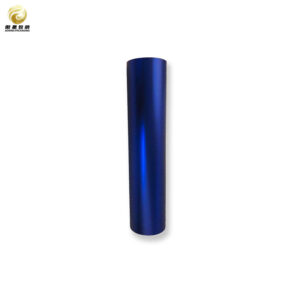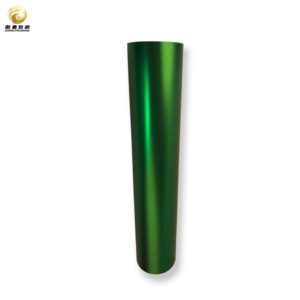Metalized film roll
| Product | PET Metallized Film |
| Material | PET + color+ aluminum layer / PET + aluminum + color layer |
| Thickness | 12~188um |
| Color Option | Red,Blue,Purple,Green,Gold,Yellow,Rose,Rainbow,etc. |
| Width & Length | Width:500~1800mm Length:Customized |
Detailed Descriptions
Metalized film roll is a crucial component in the packaging industry, playing a significant role in preserving the quality and extending the shelf life of various products. It is a versatile material that offers numerous benefits, making it a popular choice for packaging applications. In this article, we will explore the different aspects of metalized film roll, including its definition, properties, types, advantages, applications, manufacturing process, quality factors, maintenance and storage, environmental impact, comparison with other packaging materials, and its future in the packaging industry.
What is Metalized Film Roll?
Metalized film roll refers to a type of packaging material that is coated with a thin layer of metal, typically aluminum. This metal coating provides the film with enhanced barrier properties against moisture, oxygen, and light. The metal layer is applied through a process called vacuum metallization, where aluminum is evaporated in a vacuum chamber and then condensed onto the film surface. This results in a highly reflective and shiny appearance.
Metalized film roll possesses several key properties that make it suitable for packaging applications. Firstly, it offers excellent barrier properties, preventing the entry of moisture and oxygen into the packaged product. This helps in preserving the freshness and quality of perishable goods such as food and pharmaceuticals. Secondly, metalized film roll has high tensile strength and puncture resistance, ensuring durability during transportation and handling. Additionally, it has good heat resistance and can withstand high temperatures without deforming or melting.
Types of Metalized Film Roll
Metalized film roll comes in various types based on the materials used and their specific applications. Some common types include metallized polyester film (PET), metallized polypropylene film (PP), metallized nylon film (PA), and metallized polyethylene film (PE). Each type has its own unique properties and characteristics that make it suitable for different packaging requirements.
Metallized polyester film (PET) is widely used in the packaging industry due to its excellent barrier properties, high tensile strength, and dimensional stability. It is commonly used for packaging snacks, confectionery, and other food products. Metallized polypropylene film (PP) offers good moisture resistance and is often used for packaging dry goods, such as coffee, tea, and pet food. Metallized nylon film (PA) provides exceptional oxygen barrier properties and is commonly used for packaging meat, cheese, and other perishable products. Metallized polyethylene film (PE) is known for its flexibility and heat-sealing capabilities, making it suitable for applications such as sachets and pouches.
When comparing the different types of metalized film roll, it is important to consider factors such as barrier properties, strength, flexibility, heat resistance, and cost. The choice of metalized film roll will depend on the specific requirements of the packaged product and the desired level of protection.
Advantages of Metalized Film Roll
| Advantages of Metalized Film Roll |
|---|
| 1. High Barrier Properties |
| 2. Excellent Moisture Resistance |
| 3. Superior Oxygen Barrier |
| 4. Enhanced Shelf Life of Products |
| 5. Increased Product Visibility |
| 6. Improved Printability |
| 7. Cost-Effective Packaging Solution |
The use of metalized film roll in packaging offers several advantages over other materials. Firstly, it provides superior barrier properties, effectively protecting the packaged product from moisture, oxygen, and light. This helps in preserving the freshness, flavor, and nutritional value of food products, extending their shelf life. Metalized film roll also prevents the entry of contaminants and odors, ensuring the integrity of the packaged goods.
Another advantage of metalized film roll is its cost-effectiveness. Compared to other packaging materials such as glass or aluminum foil, metalized film roll is more affordable while still providing excellent barrier properties. It is lightweight and requires less energy to produce and transport, resulting in cost savings throughout the supply chain.
Furthermore, metalized film roll offers durability and flexibility. It has high tensile strength and puncture resistance, protecting the packaged product during transportation and handling. The flexibility of metalized film roll allows for easy customization and shaping, making it suitable for various packaging formats such as bags, pouches, and wrappers.
Applications of Metalized Film Roll
Metalized film roll finds applications in a wide range of industries and products. In the food industry, it is commonly used for packaging snacks, confectionery, bakery products, frozen foods, and beverages. The barrier properties of metalized film roll help in preserving the freshness and quality of these perishable goods. In the pharmaceutical industry, metalized film roll is used for packaging medicines, vitamins, and other healthcare products. It provides protection against moisture and oxygen, ensuring the efficacy and stability of the packaged medications.
Metalized film roll is also utilized in the personal care and cosmetic industry for packaging products such as shampoo, lotion, soap, and perfumes. The reflective nature of metalized film roll enhances the visual appeal of these products on store shelves. Additionally, metalized film roll is used in the agriculture industry for packaging seeds, fertilizers, and pesticides. It provides protection against moisture and UV radiation, ensuring the viability of the packaged seeds.
Successful applications of metalized film roll can be seen in various product categories. For example, in the snack industry, metalized film roll is used for packaging potato chips to maintain their crispiness and prevent moisture absorption. In the coffee industry, metalized film roll is used for packaging coffee beans to preserve their aroma and flavor. These examples highlight the importance of metalized film roll in maintaining product quality and extending shelf life.
Manufacturing Process of Metalized Film Roll
The manufacturing process of metalized film roll involves several steps to ensure the proper application of the metal coating onto the film surface. The process begins with the preparation of the base film, which can be made from materials such as polyester (PET), polypropylene (PP), nylon (PA), or polyethylene (PE). The base film is then subjected to a series of treatments to enhance its surface properties, such as corona treatment or primer coating.
Next, the base film is loaded into a vacuum metallization chamber, where the metal coating is applied. The chamber is evacuated to create a vacuum environment, and aluminum wire or pellets are heated until they vaporize. The vaporized aluminum condenses onto the surface of the film, forming a thin layer of metal. The thickness of the metal layer can be controlled by adjusting the deposition time and temperature.
After the metallization process, the metalized film roll undergoes additional treatments such as lacquering or laminating to improve its performance and appearance. Lacquering provides a protective coating that enhances the barrier properties and prevents the metal layer from oxidizing. Laminating involves bonding the metalized film with other materials such as paper or plastic to create composite structures with specific properties.
Different techniques can be used in the production of metalized film roll, including direct metallization, transfer metallization, and in-line metallization. Direct metallization involves depositing the metal coating directly onto the base film. Transfer metallization involves depositing the metal coating onto a carrier film and then transferring it onto the base film. In-line metallization integrates the metallization process into the film production line, eliminating the need for separate metallization equipment.
Factors Affecting the Quality of Metalized Film Roll
Several factors can affect the quality and performance of metalized film roll. Firstly, the choice of base film material plays a crucial role in determining the barrier properties, strength, and flexibility of the final product. Different base films have varying levels of resistance to moisture, oxygen, and UV radiation. It is important to select a base film that meets the specific requirements of the packaged product.
The quality of the metal coating is another critical factor. The thickness and uniformity of the metal layer can impact the barrier properties and appearance of the metalized film roll. A thin and uniform metal layer ensures optimal barrier performance, while an uneven or thick layer may result in reduced barrier properties or visual defects.
The manufacturing process also affects the quality of metalized film roll. Factors such as temperature, pressure, and deposition time can influence the adhesion and integrity of the metal coating. Proper control and monitoring of these parameters are essential to ensure consistent quality and performance.
Furthermore, storage and handling conditions can impact the quality of metalized film roll. Exposure to high temperatures, humidity, or direct sunlight can degrade the barrier properties and cause the metal layer to oxidize. It is important to store metalized film roll in a cool, dry place away from direct sunlight to maintain its performance.
Maintaining quality standards in the production of metalized film roll is crucial to ensure customer satisfaction and product reliability. Regular testing and inspection should be conducted to monitor the barrier properties, strength, and appearance of the metalized film roll. Quality control measures such as visual inspection, barrier testing, and mechanical testing should be implemented to identify any defects or deviations from specifications.
Maintenance and Storage of Metalized Film Roll
Proper maintenance and storage of metalized film roll are essential to preserve its quality and performance. Here are some tips for handling and storing metalized film roll:
1. Handle with care: Metalized film roll should be handled with care to avoid scratches or damage to the metal coating. It is recommended to use gloves or clean tools when handling the film.
2. Avoid moisture exposure: Metalized film roll is sensitive to moisture, which can degrade its barrier properties and cause the metal layer to oxidize. It is important to store the film in a dry environment and avoid exposure to high humidity.
3. Protect from direct sunlight: Direct sunlight can cause the metalized film roll to heat up and degrade over time. It is advisable to store the film in a cool, shaded area away from direct sunlight.
4. Use proper storage containers: Metalized film roll should be stored in clean, dry containers to protect it from dust, dirt, and moisture. The containers should be sealed tightly to prevent air and moisture from entering.
5. Rotate stock: To ensure the freshness and quality of metalized film roll, it is recommended to rotate the stock on a first-in, first-out basis. This helps to prevent the film from sitting in storage for extended periods, which can lead to degradation.
By following these best practices for maintenance and storage, the quality and performance of metalized film roll can be preserved, ensuring its effectiveness in packaging applications.
Environmental Impact of Metalized Film Roll
The environmental impact of metalized film roll has become a topic of concern in recent years. While metalized film roll offers several advantages in terms of barrier properties and cost-effectiveness, it also poses challenges in terms of sustainability and recyclability.
One of the main environmental concerns associated with metalized film roll is its disposal. The metal layer on the film makes it difficult to recycle through traditional recycling processes. Separating the metal layer from the base film requires specialized equipment and processes, which are not widely available. As a result, metalized film roll often ends up in landfills or incinerators, contributing to waste generation and greenhouse gas emissions.
To address these concerns, efforts are being made to develop sustainable alternatives to metalized film roll. One such alternative is metallized biodegradable film, which combines the barrier properties of metalized film with the biodegradability of bio-based materials. These films are designed to break down naturally over time, reducing their impact on the environment.
Another approach is the development of recyclable metalized films that can be easily separated into their component materials for recycling. Research is underway to explore new technologies and processes that enable the recycling of metalized film roll, reducing waste and promoting a circular economy.
Comparison of Metalized Film Roll with Other Packaging Materials
When comparing metalized film roll with other packaging materials such as plastic, paper, and glass, several factors need to be considered, including barrier properties, cost, environmental impact, and versatility.
Metalized film roll offers superior barrier properties compared to plastic films. It provides excellent protection against moisture, oxygen, and light, ensuring the freshness and quality of the packaged product. Plastic films, on the other hand, may have lower barrier properties and may require additional coatings or laminations to achieve similar levels of protection.
In terms of cost-effectiveness, metalized film roll is often more affordable than glass or aluminum foil. It is lightweight and requires less energy to produce and transport, resulting in cost savings throughout the supply chain. Glass and aluminum foil, on the other hand, are heavier and more expensive to produce and transport.
From an environmental perspective, metalized film roll has both advantages and challenges. While it offers excellent barrier properties and cost-effectiveness, its disposal and recyclability pose challenges. Plastic films can be recycled through existing recycling processes, but their barrier properties may not be as effective as metalized film roll. Glass is recyclable but has higher energy requirements for production and transportation. Aluminum foil is recyclable but has a higher environmental impact due to its extraction process.
In terms of versatility, metalized film roll offers flexibility in terms of shape and format. It can be easily customized into various packaging formats such as bags, pouches, wrappers, and labels. Plastic films also offer versatility in terms of shape and format but may require additional coatings or laminations for specific applications. Glass and aluminum foil have limited flexibility in terms of shaping and customization.
Overall, the choice of packaging material depends on the specific requirements of the packaged product, cost considerations, environmental impact, and desired level of protection.
Future of Metalized Film Roll in Packaging Industry
The future of metalized film roll in the packaging industry looks promising, with ongoing trends and innovations driving its continued use and development. One of the key trends is the increasing demand for sustainable packaging solutions. As consumers become more environmentally conscious, there is a growing need for packaging materials that are recyclable, biodegradable, and have a reduced environmental impact. This trend is likely to drive the development of sustainable alternatives to metalized film roll, such as metallized biodegradable films or recyclable metalized films.
Another trend is the focus on convenience and functionality in packaging. Consumers are looking for packaging solutions that are easy to open, resealable, and offer portion control. Metalized film roll can be easily customized into various formats that meet these requirements, making it a preferred choice for manufacturers.
In terms of technology advancements, there are ongoing efforts to improve the manufacturing process of metalized film roll. New techniques and equipment are being developed to enhance the efficiency and quality of the metallization process. This includes advancements in vacuum metallization technology, such as improved deposition rates, better control of metal layer thickness, and reduced energy consumption.
Furthermore, research is being conducted to explore the use of nanotechnology in metalized film roll. Nanomaterials can enhance the barrier properties of the film, improve its mechanical strength, and provide additional functionalities such as antimicrobial properties or UV protection.
In conclusion, metalized film roll plays a crucial role in the packaging industry due to its excellent barrier properties, cost effectiveness, and versatility. Its ability to protect products from moisture, oxygen, and light makes it an ideal choice for a wide range of applications. Additionally, its lightweight nature and ease of customization make it a popular option for manufacturers looking to enhance their packaging solutions. Overall, metalized film roll is a valuable packaging material that helps ensure the quality and freshness of products while also providing a visually appealing finish.
FAQs
What is a metalized film roll?
A metalized film roll is a type of packaging material that is made by depositing a thin layer of metal onto a plastic film substrate. This process creates a barrier that helps to protect the contents of the package from moisture, oxygen, and other environmental factors.
What are the benefits of using a metalized film roll?
Metalized film rolls offer several benefits, including increased shelf life for products, improved product appearance, and enhanced protection against environmental factors. They are also lightweight and easy to handle, making them a popular choice for packaging a wide range of products.
What types of products are typically packaged using metalized film rolls?
Metalized film rolls are used to package a wide range of products, including food items, pharmaceuticals, cosmetics, and industrial products. They are particularly useful for products that are sensitive to moisture, oxygen, or other environmental factors.
What types of metal are typically used in metalized film rolls?
The most common metals used in metalized film rolls are aluminum and copper. These metals are chosen for their ability to create an effective barrier against environmental factors while also being lightweight and easy to handle.
What is the process for creating a metalized film roll?
The process for creating a metalized film roll involves depositing a thin layer of metal onto a plastic film substrate. This is typically done using a vacuum deposition process, which involves heating the metal to a high temperature and then evaporating it onto the film substrate. The metal layer is then coated with a protective layer to prevent it from oxidizing or corroding.
What are some common applications for metalized film rolls?
Metalized film rolls are used in a wide range of applications, including food packaging, pharmaceutical packaging, cosmetic packaging, and industrial packaging. They are also used in the production of reflective insulation, decorative films, and electronic components.








